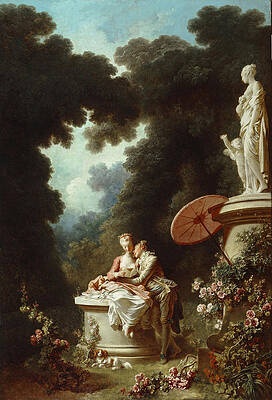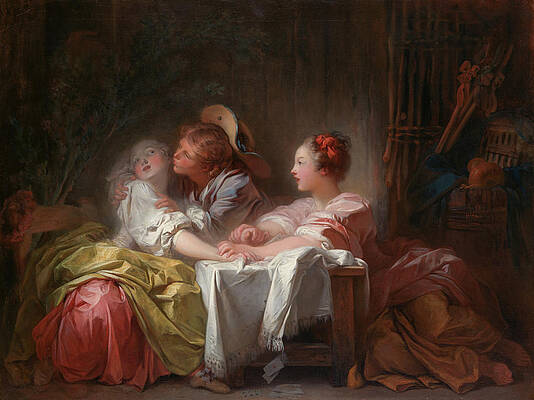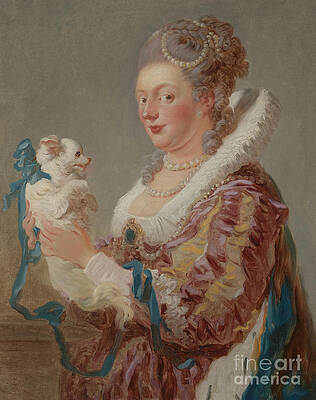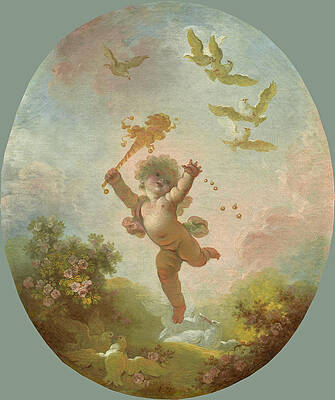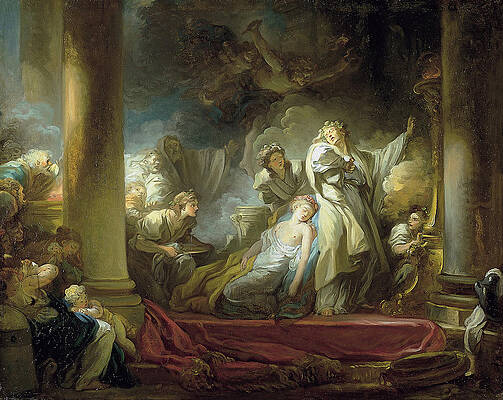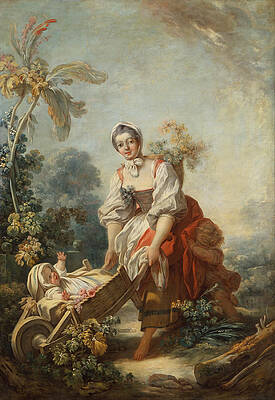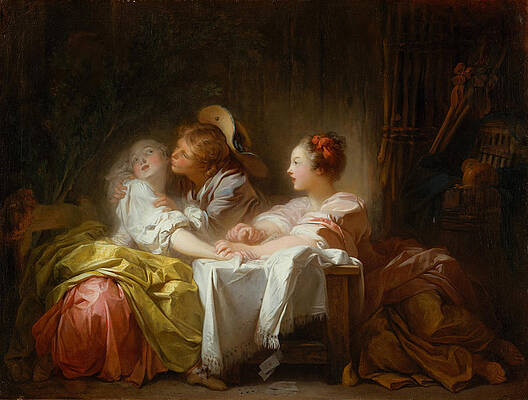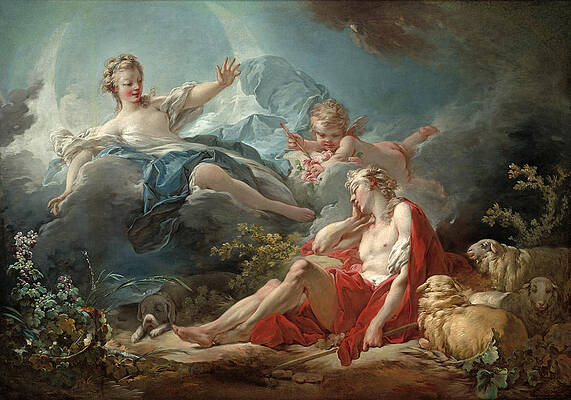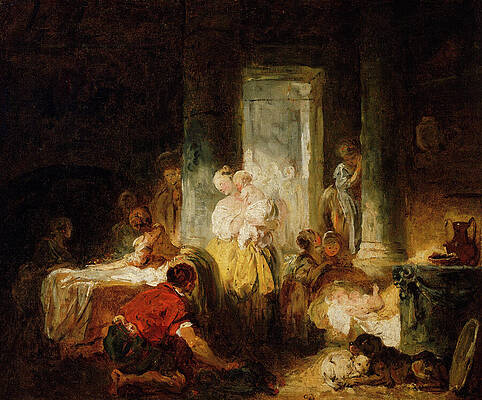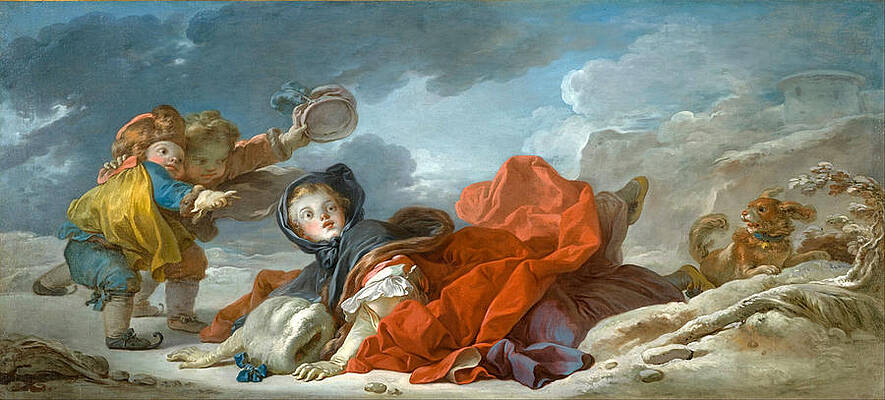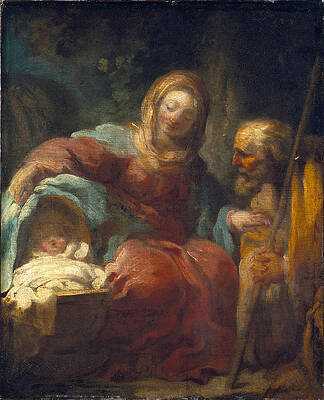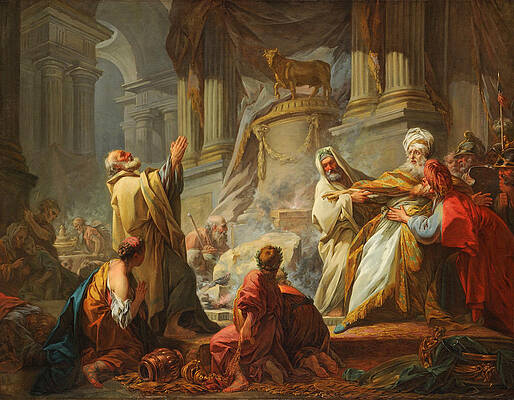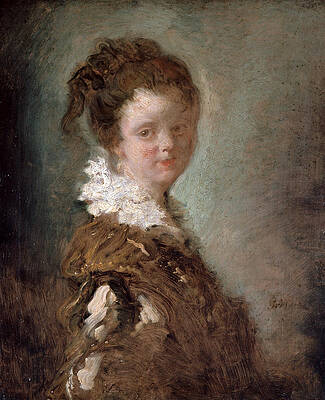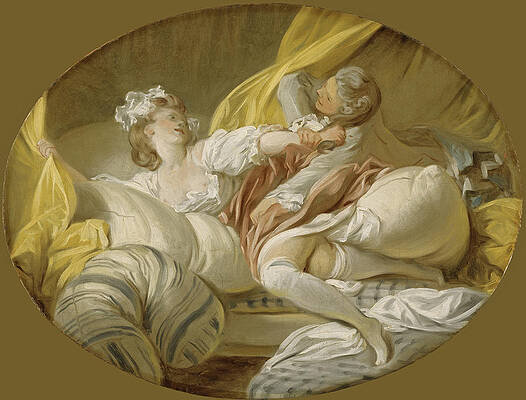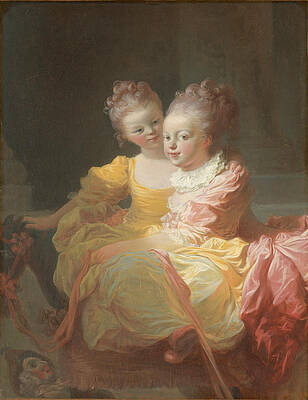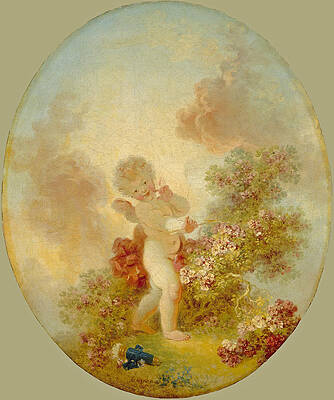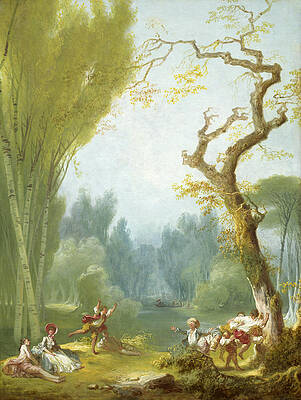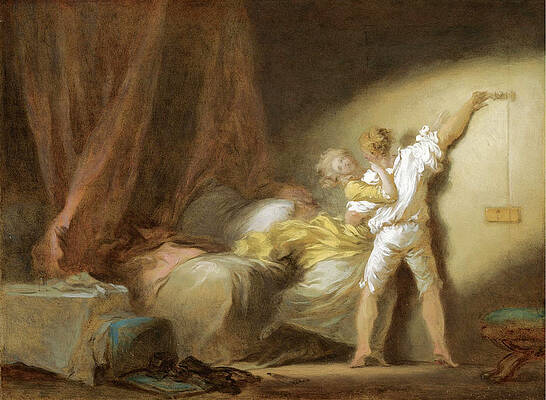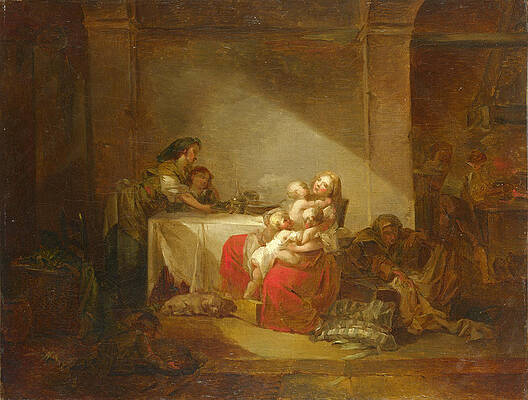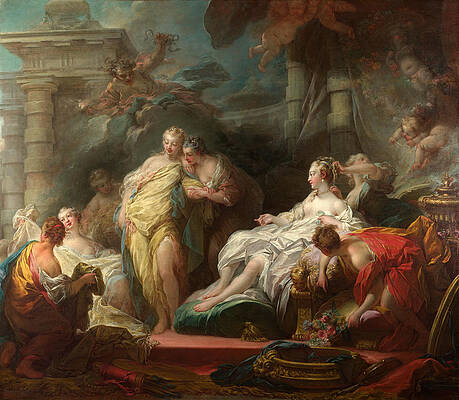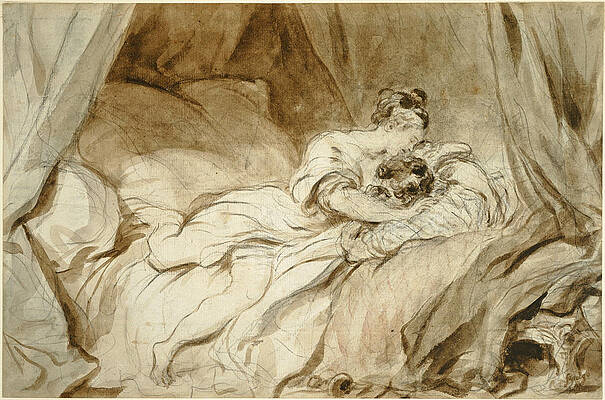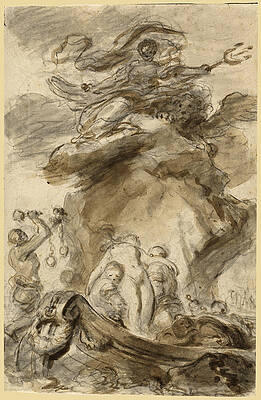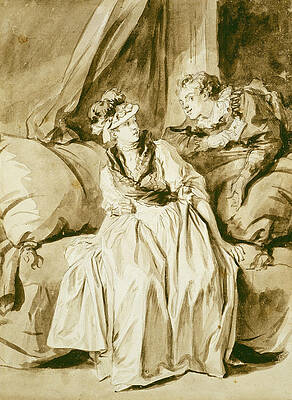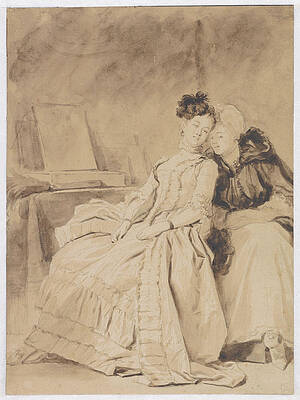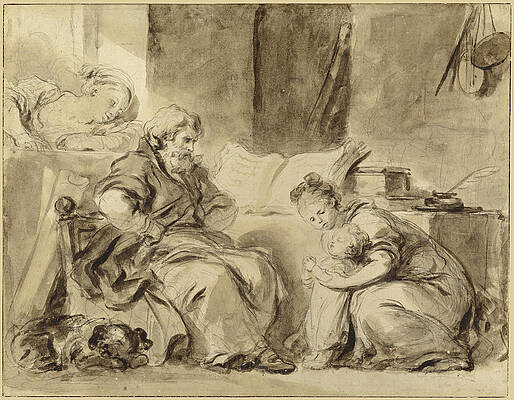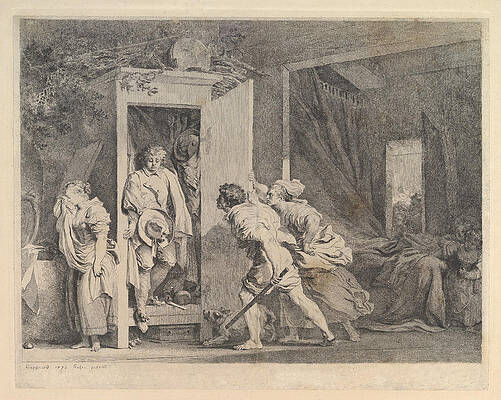Jean-Honoré Fragonard
Paintings
The Progress of Love. Love Letters
The Love Letter
The Goddess Aurora triumphing over Night
Love the Sentinel
The Progress of Love. Reverie
The stolen kiss
A Woman with a Dog
Love as Folly
Jean-Claude Richard abbe of Saint-Non
The sacrifice of Callirrhoe
The Joys of Motherhood
The Stolen Kiss
Diana and Endymion
Roman Interior
Winter
Blind-Man's Buff
The Rest on the Flight into Egypt
Jeroboam Sacrificing to the Idols
Allegory of Vigilance
Young Woman
The Beautiful Servant
Portrait of a Young Woman
The Two Sisters
Love the Sentinel 2
A Game of Horse and Rider
The Bolt
Interior Scene
Psyche showing her Sisters her Gifts from Cupid
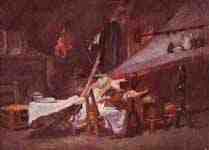
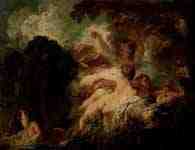
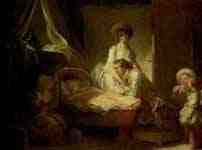
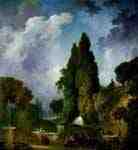
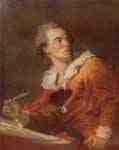
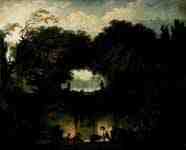
The garden of the Villa d'Este (Tivoli)
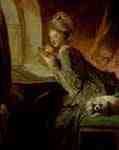
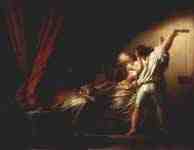
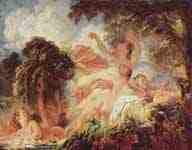
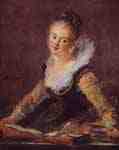
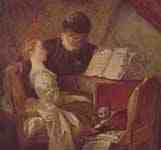
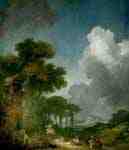
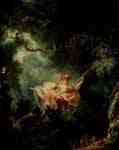
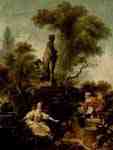
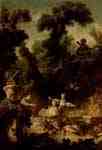
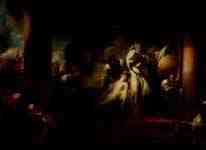
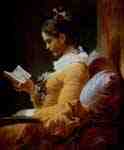
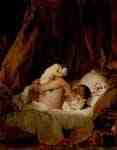
Girl in bed playing with a little dog
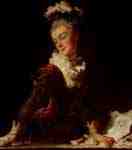
Portrait of the ballet dancer Sophie Guimard
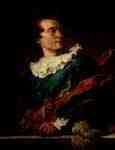
Portrait of the Abbé de Saint-Non
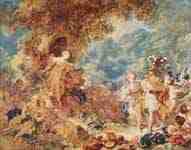
Rinaldo in the Gardens of Armida
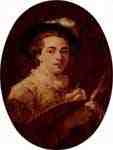
Drawings
The Useless Resistance
The Girl with the Marmot
Angelica Is Exposed to the Orc
The Letter or The Spanish Conversation
The Intimate Conversation
A Prayer for Grandpapa
The Wardrobe
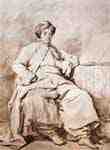

Illustration for Ariosto's "Orlando Furioso"

Illustration for Ariosto's "Orlando Furioso"
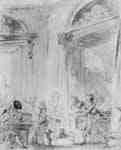
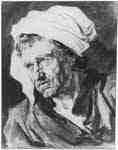
Head of a man with white turban
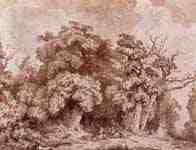
Landscape (society in a forest clearing)
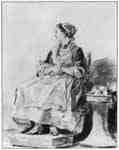
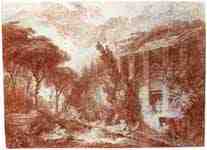
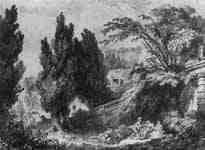
Park landscape with cheerful company
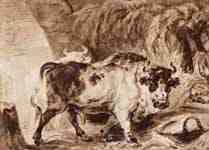
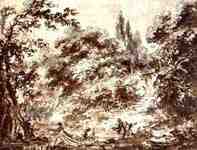
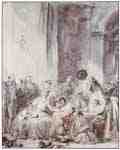
Competition or instruction in reading
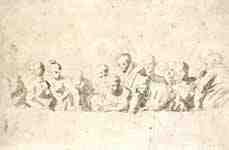
Fine Art Prints | Greeting Cards | Phone Cases | Lifestyle | Face Masks | Men's , Women' Apparel | Home Decor | jigsaw puzzles | Notebooks | Tapestries | ...
Jean-Honoré Fragonard (French: [ʒã onoʀe fʀaɡonɑʀ]; 5 April 1732[2] in Grasse – 22 August 1806 in Paris) was a French painter and printmaker whose late Rococo manner was distinguished by remarkable facility, exuberance, and hedonism. One of the most prolific artists active in the last decades of the Ancien Régime, Fragonard produced more than 550 paintings (not counting drawings and etchings), of which only five are dated. Among his most popular works are genre paintings conveying an atmosphere of intimacy and veiled eroticism.
Biography
Statue of Fragonard in Grasse, his birthplace
Jean-Honoré Fragonard, Blind Man's Bluff, 1775-1780
Landscape with Shepherds and Flock of Sheep, c. 1763-65, National Museum of Western Art, Tokyo
Jean-Honoré Fragonard was born at Grasse, Alpes-Maritimes, the son of François Fragonard, a glover, and Françoise Petit.[1] Fragonard was articled to a Paris notary when his father's circumstances became strained through unsuccessful speculations, but showed such talent and inclination for art that he was taken at the age of eighteen to François Boucher. Boucher recognized the youth's rare gifts but, disinclined to waste his time with one so inexperienced, sent him to Chardin's atelier. Fragonard studied for six months under the great luminist, then returned more fully equipped to Boucher, whose style he soon acquired so completely that the master entrusted him with the execution of replicas of his paintings.
Though not yet a pupil of the Academy, Fragonard gained the Prix de Rome in 1752 with a painting of "Jeroboam Sacrificing to the Golden Calf", but before proceeding to Rome he continued to study for three years under Charles-André van Loo. In the year preceding his departure he painted the "Christ washing the Feet of the Apostles" now at Grasse Cathedral. On 17 September 1756, he took up his abode at the French Academy in Rome, then presided over by Charles-Joseph Natoire.
While at Rome, Fragonard contracted a friendship with a fellow painter, Hubert Robert. In 1760, they toured Italy together, executing numerous sketches of local scenery. It was in these romantic gardens, with their fountains, grottos, temples and terraces, that Fragonard conceived the dreams which he was subsequently to render in his art. He also learned to admire the masters of the Dutch and Flemish schools (Rubens, Hals, Rembrandt, Ruisdael), imitating their loose and vigorous brushstrokes. Added to this influence was the deep impression made upon his mind by the florid sumptuousness of Giovanni Battista Tiepolo, whose works he had an opportunity to study in Venice before he returned to Paris in 1761.
In 1765 his "Coresus et Callirhoe" secured his admission to the Academy. It was made the subject of a pompous (though not wholly serious) eulogy by Diderot, and was bought by the king, who had it reproduced at the Gobelins factory. Hitherto Fragonard had hesitated between religious, classic and other subjects; but now the demand of the wealthy art patrons of Louis XV's pleasure-loving and licentious court turned him definitely towards those scenes of love and voluptuousness with which his name will ever be associated, and which are only made acceptable by the tender beauty of his color and the virtuosity of his facile brushwork; such works include the Blind Man's Bluff (Le collin maillard),[3] Serment d'amour (Love Vow), Le Verrou (The Bolt), La Culbute (The Tumble), La Chemise enlevée (The Shirt Removed), and L'escarpolette (The Swing, Wallace Collection), and his decorations for the apartments of Mme du Barry and the dancer Madeleine Guimard. The portrait of Denis Diderot (1769) has recently had its attribution to Fragonard called into question.
A lukewarm response to these series of ambitious works induced Fragonard to abandon Rococo and to experiment with Neoclassicism. He married Marie-Anne Gérard, herself a painter of miniatures,[4] (1745–1823) on 17 June 1769 and had a daughter, Rosalie Fragonard (1769–1788), who became one of his favourite models. In October 1773, he again went to Italy with Pierre-Jacques Onézyme Bergeret de Grancourt and his son, Pierre-Jacques Bergeret de Grancourt. In September 1774, he returned through Vienna, Prague, Dresden, Frankfurt and Strasbourg.
Back in Paris Marguerite Gérard, his wife's 14-year-old sister, became his pupil and assistant in 1778. In 1780, he had a son, Alexandre-Évariste Fragonard (1780–1850), who eventually became a talented painter and sculptor. The French Revolution deprived Fragonard of his private patrons: they were either guillotined or exiled. The neglected painter deemed it prudent to leave Paris in 1790 and found shelter in the house of his cousin Maubert at Grasse, which he decorated with the series of decorative panels known as the Les progrès de l'amour dans le cœur d'une jeune fille,[5] originally painted for Château du Barry.[6]
Jean-Honoré Fragonard returned to Paris early in the nineteenth century, where he died in 1806, almost completely forgotten.
Reputation
The Swing (French: L'escarpolette), 1767, Wallace Collection, London.
For half a century or more he was so completely ignored that Wilhelm Lübke's 1873 art history volume omits the very mention of his name.[7] Subsequent reevaluation has confirmed his position among the all-time masters of French painting. The influence of Fragonard's handling of local colour and expressive, confident brushstroke on the Impressionists (particularly his grand niece, Berthe Morisot, and Renoir) cannot be overestimated. Fragonard's paintings, alongside those of François Boucher, seem to sum up an era.[8]
One of Fragonard's most renowned paintings is The Swing, also known as The Happy Accidents of the Swing (its original title), an oil painting in the Wallace Collection in London. It is considered to be one of the masterpieces of the rococo era, and is Fragonard's best known work.[9] The painting portrays a young gentleman concealed in the bushes, observing a lady on swing being pushed by her spouse, who is standing in the background, hidden in the shadows, as he is unaware of the affair. As the lady swings forward, the young man gets a glimpse under her dress. According to Charles Collé's memoirs[10] a young nobleman[11] had requested this portrait of his mistress seated on a swing. He asked first Gabriel François Doyen to make this painting of him and his mistress. Not comfortable with this frivolous work, Doyen refused and passed on the commission to Fragonard.[10]
Value of works
On December 5, 2013, in Bonhams New Bond Street, London, Salerooms the Fragonard portrait of François-Henri duc d'Harcourt sold for £17,106,500 Sterling - US $28,058,081 - setting a world record price for the artist at auction. The previous record was £5,300,000 for a painting sold in London in 1999. The sum paid is also the highest price for an Old Master Painting sold at auction anywhere in the world in 2013. Bonhams' sale of paintings and sculpture from the renowned collection of the German philanthropist, the late Dr Gustav Rau, raised more than £19 million, with the proceeds benefiting the Foundation of the German Committee for UNICEF – for the children of the world. [12][13]
Recent exhibitions
Consuming Passion : Fragonard's Allegories of Love - Sterling and Francine Clark Art Institute, Williamstown, MA, from 28 October 2007 to 21 January 2008.
Fragonard - Jacquemart-André Museum, Paris, from 3 October 2007 to 13 January 2008.
Fragonard. Origines et influences. De Rembrandt au XXIe siècle - Caixa Forum, Barcelona, from 10 November 2006 to 11 February 2007.
Les Fragonard de Besançon, Musée des Beaux-Arts et d'archéologie de Besançon, from 8 December 2006 to 2 April 2007: Official website
Jean-Honoré Fragonard, dessins du Louvre, Musée du Louvre, Paris, from 3 December 2003 to 8 March 2004.
Fragonard amoureux, Musée du Luxembourg, Paris, from 16 September 2015 to 24 January 2016: Official website
See also
Honoré Fragonard
History of painting
Western painting
Jeroboam Sacrificing to Idols
References and sources
References
Houël de Chaulieu, Philippe (May 2006). "L'histoire en marche; Anniversaire: Jean-Honoré Fragonard". Intermédiaire des chercheurs & curieux — Issue 644. pp. 571–574. ISSN 0994-4532. Retrieved May 9, 2009.
Edmond and Jules de Goncourt (1881–1882). "Fragonard". L'Art du XVIIIe siècle III. G. Charpentier. p. 241. ISBN 978-2-35548-008-9. Retrieved 2009-06-01. "Voici l'acte de naissance de Fragonard, dont M. Sénequier veut bien nous envoyer la copie prise par lui sur les registres conservés à la mairie de Grasse : «Année mille sept cent trente-deux. Le sixième avril, a été baptisé Jean-Honoré Fragonard, né le jour précédent, fils du sieur François, marchand, et de demoiselle Françoise Petit, son épouse ; le parrain : sieur Jean-Honoré Fragonard, son aïeul, et la marraine demoiselle Gabrielle Petit, sa tante, tous de cette paroisse. Signé qui a su : Fragonard, Fragonard, Martin, curé.»" (birth/baptism certificate)
Milam, Jennifer (1998). "Fragonard and the blindman's game: Interpreting representations of Blindman's Buff.". Art History 21 (1): 1–25. doi:10.1111/1467-8365.00090. ISSN 0141-6790.
Ferrand, Franck (2008). "Monsieur Fragonard.". France Today 23 (2): 30–31. ISSN 0895-3651.
Also known as "Roman d'amour de la jeunesse".
Donald Posner. "The True Path of Fragonard's 'Progress of Love'" (PDF). Burlington Magazine date= August 1972. Retrieved 21 February 2013.
http://www.gutenberg.org/files/36104/36104-h/36104-h.htm#ar14
"Fragonard, Jean-Honoré", WebMuseum, Paris. Retrieved 22 June 2014.
Ingamells, John, The Wallace Collection, Catalogue of Pictures, Vol III, French before 1815, 165, Wallace Collection, 1989, ISBN 0-900785-35-7,
Collé, Charles. Journal et mémoires de Charles Collé sur les hommes de lettres, les ouvrages dramatiques et les événements les plus mémorables du règne de Louis XV (1748-1772) III. Paris: Firmin Didot Frères, Fils et Cie. pp. 165–166.
Although his identity was not unveiled by Collé, it has been thought that it was Marie-François-David Bollioud de Saint-Julien, baron of Argental (1713–1788), best known as Baron de Saint-Julien, the then Receiver General of the French Clergy. However there is little evidence for this, according to Ingamells, 163-164.
news agencies - 5 December 2013
"Fragonard Portrait on View at Bonhams Geneva Prior to Benefit Sale". artfixdaily.com/. 8 August 2013. Retrieved 11 August 2013.
Sources
Books
Public Domain This article incorporates text from a publication now in the public domain: Chisholm, Hugh, ed. (1911). "Fragonard, Jean-Honore". Encyclopædia Britannica (11th ed.). Cambridge University Press.
Edmond and Jules de Goncourt (1881–1882). "Fragonard". L'Art du XVIIIe siècle III. G. Charpentier. p. 241. ISBN 978-2-35548-008-9. Retrieved 2009-05-10.
Eva-Gesine Baur (2007). Rococo. Taschen. ISBN 978-3-8228-5306-1.
Jean Montague Massengale (1993). Jean-Honore Fragonard. Harry N. Abrams, Inc. ISBN 0-8109-3313-6.
Articles and webpages
Lajer-Burcharth, Ewa (2003). "Fragonard in Detail". Differences: A Journal of Feminist Cultural Studies 14 (3): 34–56. doi:10.1215/10407391-14-3-34. ISSN 1040-7391.
Simon, Jonathan (2002). "The Theater of Anatomy: The Anatomical Preparations of Honore Fragonard". Eighteenth-Century Studies 36 (1): 63. doi:10.1353/ecs.2002.0066. ISSN 0013-2586.
Sheriff, Mary D. (1987). "Invention, Resemblance, and Fragonard's Portraits de Fantaisie.". Art Bulletin 69 (1): 77. ISSN 0004-3079.
Ferrand, Franck (2008). "Monsieur Fragonard.". France Today 23 (2): 30–31. ISSN 0895-3651.
McEwen, J. (1988). "Fragonard: Rococo or romantic?". Art in America 76 (2): 84. ISSN 0004-3214.
Milam, Jennifer (1998). "Fragonard and the blindman's game: Interpreting representations of Blindman's Buff.". Art History 21 (1): 1–25. doi:10.1111/1467-8365.00090. ISSN 0141-6790.
Milam, Jennifer (2000). "Playful Constructions and Fragonard's Swinging Scenes.". Eighteenth-Century Studies 33 (4): 543. doi:10.1353/ecs.2000.0042. ISSN 0013-2586.
Further reading
External video Jean-Honoré Fragonard - The Swing
Fragonard's The Meeting at Smarthistory.
Fragonard's The Swing at Smarthistory.
Beneath the Painted Surface: Fragonard's Fountain of Love, Getty Museum
Dore Ashton (1988). Fragonard in the Universe of Painting. Smithsonian Institution Press. ISBN 0-87474-208-0.
Mary Sheriff (1990). Fragonard: Art and Eroticism. The University of Chicago Press. ISBN 0-226-75273-9.
Jean-Pierre Cuzin (1988). Jean-Honore Fragonard: Life and Work. Complete Catalogue of the Oil Paintings. Harry N. Abrams, Inc. ISBN 0-8109-0949-9.
Georges Wildenstein (1960). The Paintings of Fragonard. Phaidon.
Martha Richler (1997). "18th century". National Gallery of Art Washington A World of Art. Scala Publishers Ltd. ISBN 1-85759-187-9.
Milton W. Brown, George R. Collins, Beatrice Farwell, Jane G. Mahler and Margaretta Salinger, "Jean-Honoré Fragonard" in Encyclopedia of Painting: Painters and Paintings of the World from Prehistoric Times to the Present Day, Myers S. Bernard (ed), Crown, 1955. pp182–83.
----
Fine Art Prints | Greeting Cards | Phone Cases | Lifestyle | Face Masks | Men's , Women' Apparel | Home Decor | jigsaw puzzles | Notebooks | Tapestries | ...
----
Artist
A - B - C - D - E - F - G - H - I - J - K - L - M -
N - O - P - Q - R - S - T - U - V - W - X - Y - Z
Retrieved from "http://en.wikipedia.org/"
All text is available under the terms of the GNU Free Documentation License


